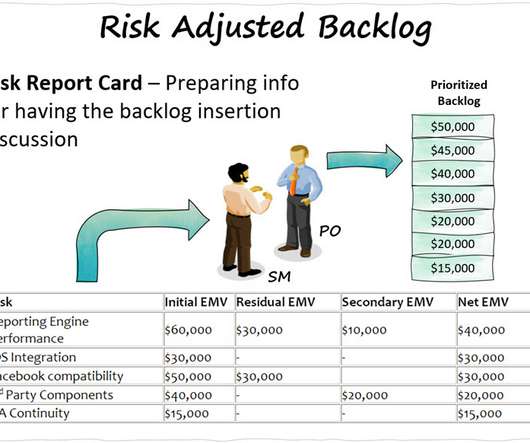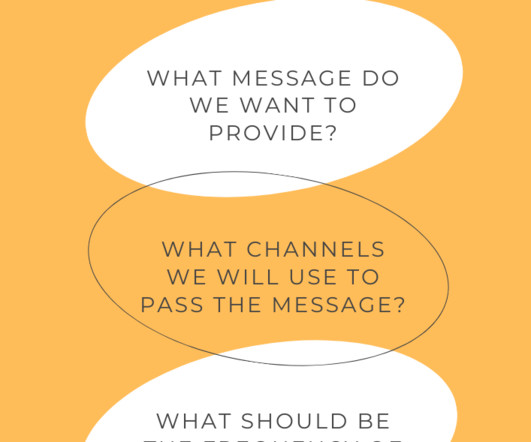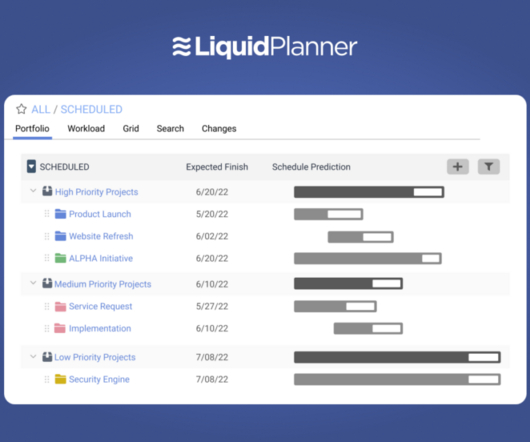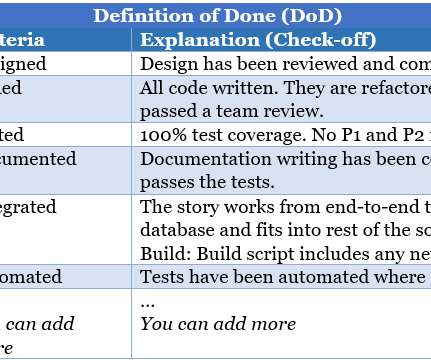Creating a Risk-Adjusted Backlog
Leading Answers
JANUARY 16, 2021
This article explains what a risk-adjusted backlog is, why they are useful, how to create one and how teams work with them. What is a Risk-Adjusted Backlog? A risk-adjusted backlog is a backlog that contains activities relating to managing risk in addition to the usual features associated with delivering value.





















Let's personalize your content